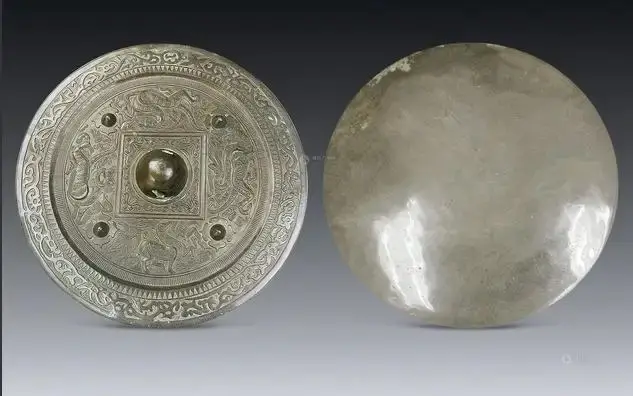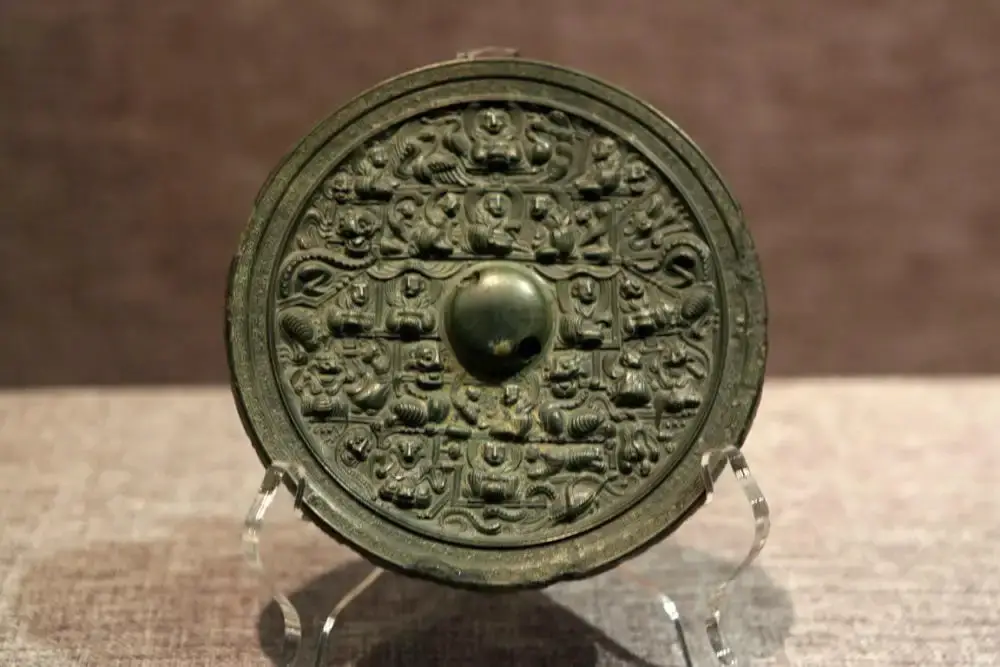Chinese people are known for their rich culture and history. Chinese magic mirror is one of the ancient Chinese arts that hold significant meaning for the people. To learn more facts about the Chinese magic mirror, this article will delve into what is a Chinese mirror, its history, the mirror element in feng shui, how magic mirrors work in Chinese culture, and mirrors in Chinese mythology.
What is a Chinese Mirror?

Among the optical phenomenon, none has captivated researchers and the scientific world for thousands of years like the magic mirror. The Chinese magic mirrors are ancient artifacts, which are made from cast bronze. The magic mirror is dated back to 206 BC-24 AD during the Chinese Han dynasty. Magic mirrors are known as t’ou kuang ching, which translates to the light transmitting mirrors. Magic mirrors are typically circular and approximately fifteen to twenty centimeters in diameter. The mirror has a shiny front surface that appears normal and can be utilized like a normal mirror. The shiny front surface is well polished and produces a clear reflection of the things in front of them. The back of the mirror has a modeled drawing or design, which can be water, animals, landscape, or an inscription.
The magical aspect of the magic mirror, which they are famous for, is the fact that when bright light is directed towards the front surface, the mirror tends to become transparent. This is because when it is reflected on a wall, the design modeled on the back is projected on the wall.
Chinese mirror history
When did China have mirrors?
The ancient artistry of Chinese magic mirrors goes back to 2900 – 2000 BC in China and also other regions, such as Indus Valley and Egypt. These bronze mirrors became widely known during the Han dynasty, from 206 BC-24 AD. During the Tang dynasty, between the period of 608 – 907 AD, a book, Register of Ancient Mirrors, explained how to make the magic mirrors, but it got lost.
Who invented mirrors in China?
Ancient Chinese people invented mirrors in China. The Register of Ancient Mirrors book also explained how to make the magic mirrors, and although the publication was lost, Shen Kou later described the mirrors in his journal, the Treasure of Dreams, around 1031-1095, since they owned three magic mirrors as a family relic.
What element is mirror in Feng Shui?
Mirrors have many applications in feng shui. Mirrors are added to your living space to create balance with the natural world in what is referred to as Xie Zi Fa (method of small additions). You must have a clear intention when you add any item to your living room.
In feng shui practice, mirrors represent the element of water. The water element attracts wisdom and introspection. Water has a cooling effect.
Additionally, water has no form and takes the shape of any Jerri can or contain. Due to their yielding quality, in feng shui, mirrors are used because they can reflect without obscurations or judgment. Mirrors can expand your view of things and focus energies.
How Chinese magic mirror works
Sir William Henry Bragg, a British physicist, chemist and mathematician, found out that although the mirror’s surface is polished and appears to be completely flat, the front curves outwards (convex) by scraping and scratching before the surface is polished.
The polished surface is then coated with a mercury amalgam. The complex process creates buckling and stress, resulting in bulges on the mirror’s surface, which are too small for the naked eye to perceive.
The bulges are the ones that match the design carved on the back of the mirror. Hence, when the magic mirror reflects bright light or a sunbeam against a dark well or a white surface in the dark, the effect reproduces the patterns in a magnified manner. You may think that the light is penetrating through the bronze on the mirror’s backside.
Mirrors meaning in Chinese culture

Mirrors have been part of Chinese culture, dating back to at least 11th BC. Many mirrors were buried with their owners in China during ancient times. Some have been passed down from one generation to the next.
During the Han Dynasty period, mirrors were typically round and more uniform. In the Song and Yuan dynasties, a wider variety of mirrors was observed; the octagonal and oblong mirrors appeared during this period. Later, glass mirrors gradually took the bronze mirror’s place.
In ancient China, mirrors were used the same way today. But in ancient China, mirrors were objects of art. Frequently, spiritual, cosmological, and magical functions and meanings were engraved on the mirrors.
As mentioned earlier, Chinese bronze mirrors are round- a shape that symbolizes bliss and perfection. In ancient China, the round form represented reunion, marriage, satisfactory love and fortune.
However, since the nature of the mirror reflection was somehow mysterious, Chinese people associated mirrors with the supernatural. Additionally, the Chinese believed mirrors could dispel evil, making them one of their favorite burial accessories.
Additionally, ancient Chinese people used mirrors for different social functions. For instance, mirrors were even given out as gifts by emperors to the common people.
Mirrors in Chinese mythology
During ancient times, Chinese people believed that the reflection in the mirror was not their reflection but another species entirely. The popular myth was that the other creature mimicked the person standing in front of the mirror so that they could learn their ways and later when they were fully ready, would emerge from the mirror, which acted as a portal between this world and theirs to take the Chinese people’s place.
The Chinese people also believed that mirror reflections would cease to exist once the other creatures made their way into this world. Legend has it that in 2697 BC, thousands of these creatures made their way into this world and sprang an attack on humanity. However, Emperor Huang Di thwarted their attack, trapped them and returned them to their mirror dimension.
Conclusion
Mirrors have been an integral part of Chinese culture. Since time immemorial, the Chinese have associated mirrors with reunion, marriage, satisfactory love and fortune. One of the most popular mirrors in Chinese history is the Chinese magic mirror; it is one of the strangest objects in the world. Today, Chinese people use mirrors in feng shui, making them a crucial element in Chinese society.

Comment
thank you Yelang! I have done some research on the complex meanings of mirrors in Chinese history and culture, I am writing an historical fantasy novel with a Cantonese girl, Lung Ching going through a Magic mirrour. I love what you wrote about Chinese mythology! that is so very interesting!!! do you know if they used files or not to polish the bronze mirrours? and what area of China does that story come from? Please keep up your blog! thanks so much, Indigo.
I think this is Carving craft